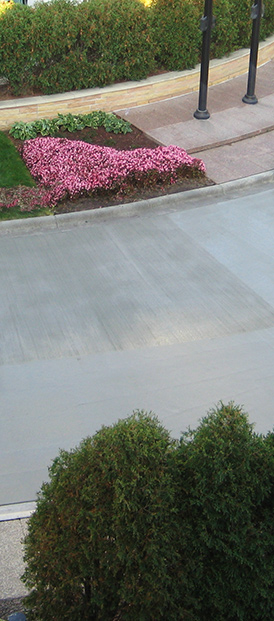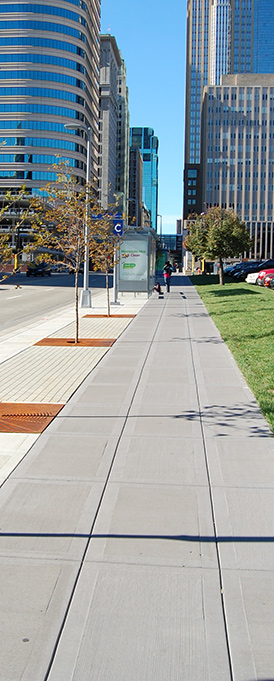Contractor Installation Requirements

Planning
- Thickness: 4 to 5 inches is common for residential use.
- Base: Sand or other granular base material assists in providing uniformity and drainage.
- Drainage: Always slope outside slabs for positive drainage. Make sure no water runs toward the house, unless special drains are incorporated to intercept such flow. A minimum slope of slab should be 1/8 inch drop per foot.
- Excavating: Be sure to take out all organic matter – grass, leaves, tree roots, wood, etc.
- Compaction: Sub grade must be compacted uniformly and evenly so the slab won’t settle and won’t vary in thickness.
- Isolation: Before concrete is delivered, install pre-molded joint material wherever flatwork comes against buildings, steps, walls, existing slabs, etc.
- Moistening: Shortly before placing concrete, wet the forms and the subgrade.

Placing & Finishing
Water should not be added at the jobsite, unless absolutely necessary in preventing unworkable concrete. Water additions can alter air contents as well as reducing durability and strength by diluting the cement content. If water is added to the truck at the job site, such additions should be recorded on the trip ticket.
Screed twice to level the surface and immediately use wood or magnesium bullfloat to take out small high and low spots. A broom finish is recommended --- particularly on driveways, walks, etc. Where a smooth finish is desired (garage floors, patios, etc.) a wood hand float finish should be used. Machine floating and/or steel troweling is not recommended.

Jointing
Control joints may be hand tooled, sawed or formed by use of inserts. When grooved or sawed, joints must be cut to a depth of at least ¼ the thickness of the slab. Control joints should be spaced so that the dimension in either direction does not exceed spacing as indicated below:
Thickness of Slab Longest Space between Joints
- 3½ inch 8 feet
- 4 inch 10 feet
- 5 inch or more 12 feet
Joints usually are at much shorter intervals in public sidewalks. Most common spacing is 5 feet. Local ordinances govern. Joints must be straight and continuous; not staggered or offset. When control joints are sawed, this should be done after all other finishing and curing application are complete and as soon as the concrete has hardened sufficiently to permit sawing without raveling.
Curing
Rheo-Shield was developed with an integral admixture blend to drastically reduce absorption and water penetration, but Rheo-Shield concrete should still be cured.
Curing is one of the most important steps in quality concrete construction and one of the most neglected. Effective curing is absolutely essential for surface durability. Curing is the process of maintaining moisture and temperature in fresh, new concrete over a period of time long enough for the concrete to gain its designed strength. Properly cured concrete is stronger, more resistant to freeze-thaw damage, and less susceptible to dusting and scaling of the surface.
Curing should be applied as soon as possible without eroding the surface. Waiting until the day after placement to apply curing products is not as effective. Curing can be accomplished in a number of ways, but the simplest, most economical and widely used method is a liquid membrane which is sprayed on the surface of a slab as soon as possible after finishing.
Rheo-Shield must be cured with AVR’s Apple Cure within thirty minutes of final finish, applied at manufacturer’s recommendation.

Sealing
Water repellant coatings and sealers can help prevent damage from freeze/thaw cycles and salting. They keep water from getting into the surface pores. Some of them may cause some darkening of the concrete. Newly cured concrete should have its period of air drying before being sealed.
Rheo-Shield reduces water penetration and increases the long-term durability and service life of the pavement without the need for sealing in 28 days. The concrete performs comparable to sealed concrete and water will bead on the surface like on a freshly waxed car for a period of time. Over time, the beading will dissipate and water may no longer bead like it once did. This does not indicate failure of the Rheo-Shield concrete.
Rheo-Shield should be sealed with AVR Final Seal, applied at manufacturer’s recommendations, after the first year of service and then every second year thereafter for warranty protection.




